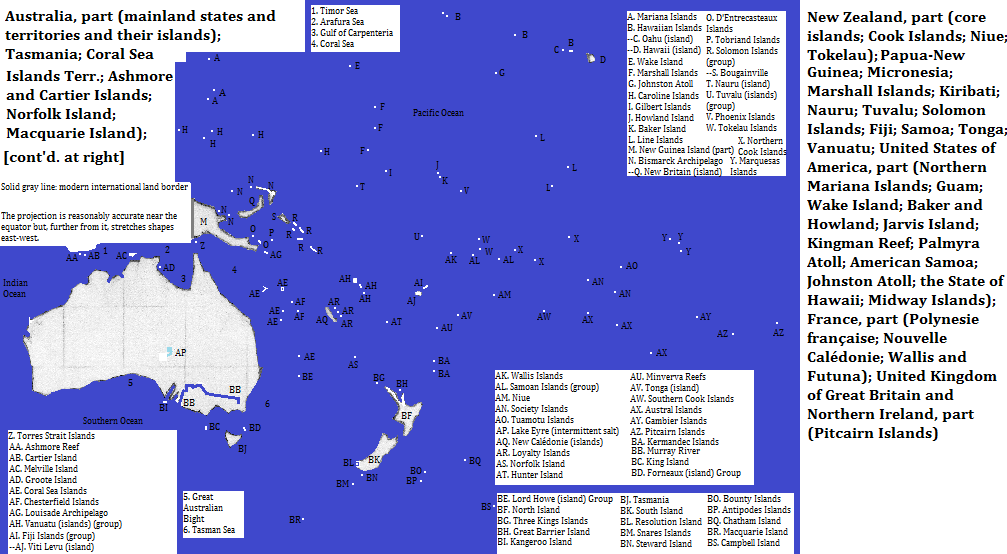North of the continent, across some seas, is insular southeast Asia. West of it, and south of Australia, is the Indian Ocean, though sometimes the part below Australia is called the Southern Ocean. Most of the islands are within the Pacific Ocean and its seas, and beyond them the ocean continues.
Map

Who lives there?
More than 30 million people live here, most of them in Australia, New Zealand, Papua-New Guinea, the Solomon Islands and the Fiji Islands. English is the majority language overall and in Australia and New Zealand. There is no majority language or language group over Papua New Guinea and the smaller islands taken together. Most people are Christians, most of them Protestants, with Roman Catholics coming in second among them.
The continent has six cities with metropolitan populations over a million, five in Australia--see the Table of Australian Cities and Auckland, New Zealand.
Nations:
AustraliaNew Zealand
Fiji, Kiribati, Marshall Islands, Micronesia, Nauru, Samoa, Solomon Islands, Tonga, Tuvalu and Vanuatu
Parts of nations:
state of HawaiiPossessions:
American Samoa, Baker and Howland Islands, Cook Islands, French Polynesia, Guam, Jarvis Island, Johnston Atoll, Kingman Reef, Midway Islands, New Caledonia, Niue, Northern Mariana Islands, Palmyra Atoll, Pitcairn Islands, Tokelau, Wake Island, Wallis and Futuna IslandsAshmore and Cartier Islands, Coral Sea Islands, Norfolk Island, Macquarie Island--statistically grouped with Australia
Christmas Island, Cocos (Keeling) Islands--statistically grouped with Jawa (Java)
Footnotes
1. New Zealand's North and South Islands, New Guinea, and Tasmania.
2. Consisting of the Midway Islands and the state of Hawaii.
3. Also called Rapa Nui, and called Easter Island in English.
4. French Polynesia in English.
5. Eyre, Torrens and Gardner.
6. The Murray-Darling combination is the continent's longest.
7. This is the tallest mountain in the eastern half of the island; the Asian half has an even taller mountain.